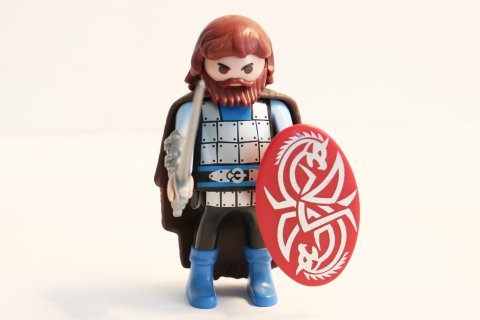Dr. Sander Bakkes: "Playful interventions can create daily positive affect for children"
Meet our team of 'Healthy play, better coping'
Dr. Sander Bakkes teaches courses in Applied Games and Game Design at the Faculty of Science. His research primarily concerns personalised games: games that take a specific player into account and tailor their content to that player. "Every one of us is unique, thankfully, especially children. What is going on with this child? What motivates that particular boy? What appeals to this girl, specifically? I feel it’s quite vital to focus our thoughts and work in that direction. And just maybe, through smart interactive interventions, we can help children who are very different from one another play together anyway, and in doing so, more effectively connect them with one another."

Sander is just old enough to remember a childhood that initially was largely free from computers. "So I climbed trees, built forts outside and generally ran around. On rainy days, I kept busy with Lego and built race tracks. From the moment our family bought a gaming computer, I remember early mornings spent playing games with my little brother – and then getting into rows because one of us had 'killed' the other."
In other words, he experienced the transition from playing outdoors to gaming first-hand, as well as the development of gaming itself from solo pursuit to social activity. "This was the result of technological improvements that could facilitate social interaction, such as faster internet connections and the current omnipresence of smartphones. Such developments opened up the possibility of gaming becoming more social, and in many cases, led to this actually happening. And now it’s even possible to design games that way!"
This poses a major challenge. First of all, you need a clear grasp of the real problems facing individual children.
From desire to game
For his part, Sander views games and game development primarily from an academic perspective. What does a game need, in terms of a structure for rewards and feedback? How can you translate a desire into a game? "This poses a major challenge. First of all, you need a clear grasp of the real problems facing individual children. On top of that, there may be many different factors at play: the home situation, school situation, pressure to conform. All of these must first be studied and defined before you can even begin working on a product.

Secondly, you need to know what it is you are trying to achieve with such a game. Say there are certain groups of children who don’t interact with one another much, who hardly speak to one another. You could use a game to change this dynamic. But how do you bring that goal to the people you want to play the game? Will it be an app? Or would an actual physical game be more effective?"
Loneliness and social exclusion in children, that’s something we’d like to help combat.
So which DoY desire are Sander and his team currently focusing on? "Loneliness and social exclusion in children, that’s something we’d like to help combat. It’s going to be a product with a solid basis in science. A playful, digital intervention aimed at bringing together children who would normally never cross paths – something that has a positive impact on the day-to-day lives of chronically ill children. It should be easy to disseminate, such as in a school or classroom. An easy to download app, for instance. While that’s about as specific as I can get at the moment, we’re sure to come up with something useful."

Open-ended play
A more or less logical progression from personalised games, in which the game takes the person playing into account, is open-ended play. Can game designers create a space that allows gamers to make their own rules? It would be much the same as when kids used to (and probably still do) make up their own games as they go: ‘This stick is a sword. If I tap you twice on the shoulder, it means you’re dead and if I tap three times it brings you back to life.’ Sander: "The key, therefore, is that the child isn’t bound to follow the rules set out for him or her by the game developers." He admires the work of colleague Pepijn Rijnbout , who is focusing on precisely this area.
Somewhat closer to home, Ronald Poppe is working on interactive playgrounds for children. "Rather than a static area with a slide and swing set, this would be a playground that allows you to measure activity. For instance: which kids run around a lot, and which sit in one place? Is there a way to entice the sitters to get up and chase something? And/or, can we encourage the overactive children to interact more with the ones sitting quietly?"
Games often involve a quest, or you can play as a character with whom you identify, so that the player becomes emotionally invested in the game.
Achieving results
The field of game design offers many tools for achieving a particular result or effect. The narrative element of gaming is one such tool, and Sander feels it offers potential for DoY researchers. "In many games, you – the player – are following a narrative. Games often involve a quest, or you can play as a character with whom you identify, so that the player becomes emotionally invested in the game. There’s a fascinating and highly diverse industry behind that narrative aspect." As an example, Sander mentions the reboot of the game Tomb Raider, which features the character Lara Croft. This classic game was recently revamped by two female writers. The new version has become more of a coming-of-age story – and much less a pastiche of tired clichés like previous incarnations of Tomb Raider.

The composition of the Healthy Play/Better Coping core team includes a useful range of disciplines, if you ask Sander. "From the neurobiology field, for instance, we gain a great deal of knowledge on reward systems and how play affects behaviour and development, and Sanne Nijhof naturally knows a great deal about both the clinical aspect and what life is like for chronically ill children. Everyone learns a lot from one another. For example, Heidi and I spoke at an event on addiction processes and reward strategies, which is her area of expertise. And then a listener piped up and said, 'That’s how game design works, too! It also centres on enticing players and rewarding them for certain interactions.'
As I see it, the way to realise our ambitions to truly improve the lives of chronically ill children is by taking insights from game design, the clinical aspect and the fundamental domain and integrating them all in intelligent fashion."
Research theme Dynamics of Youth
If you want to tackle social problems, it would be best to start with children. The Utrecht-based research theme Dynamics of Youth invests in a resilient youth. Academics from all fields collaborate in order to learn to better understand child development. How can we help children and youngsters to grow and flourish in our rapidly changing society?

